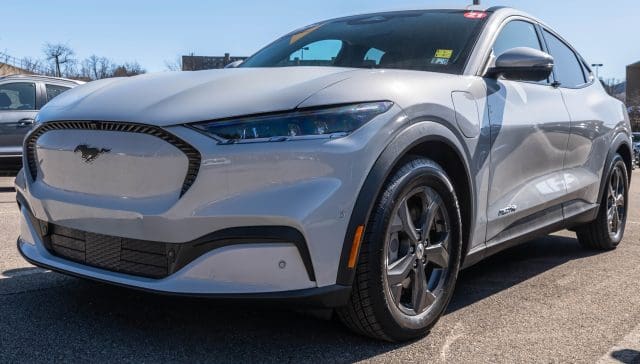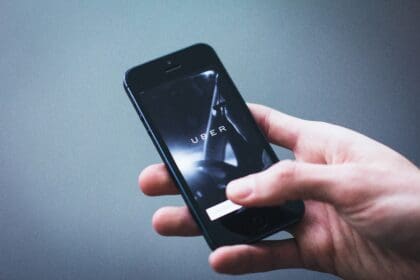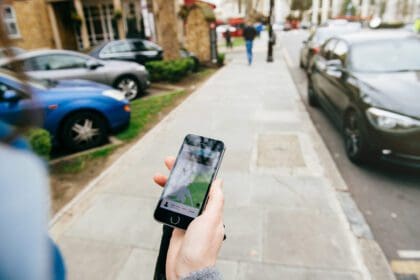An Uber boss says self-driving taxis will change people’s attitudes towards driving when they take to Britain’s streets.
Andrew Macdonald, senior vice president of mobility at Uber, showcased the capabilities of self-driving technology to the BBC as the UK prepares to allow robotaxis on our streets from 2027 – a year later than the previous government had planned.
The BBC points out that limited self-driving technology is already permitted on UK roads, but must have a driver at the wheel who is responsible for the vehicle.
Uber believes things will change so much that people will no longer be rushing to pass their driving test and get behind the wheel of their first car. Instead, they will hail a robotaxi to take them wherever they want to go.
High-tech taxi
Andrew Macdonald, senior vice president of mobility at Uber, was joined in a Wayve robotaxi by BBC technology editor Zoe Kleinman to see how a self-driving Uber – in this case a Ford Mach-e with autonomous driving sensors and software – would cope with a trip across central London.
Mr Macdonald said: “We’re ready to launch robotaxis in the UK as soon as the regulatory environment is ready for us.”
He said that in the US, robotaxis operated for 20 hours per day, seven days per week and the fare is currently the same as a ride with a human behind the wheel.
During the early stages of the technology, Uber also gives passengers the choice to request a safety driver if one is available, to ease any fears and reassure them that someone is there to help in an emergency.
And it is understandable to see why, with the BBC reporting a 2024 YouGov poll suggesting that 37% of Brits would feel “very unsafe” travelling in a car without a driver.
Mr Macdonald said he could understand their apprehension, but insisted it would be short-lived and the experience soon “becomes the new normal”.
Safe
As their journey began, Ms Kleinman was quickly agreeing with him.
She said: “The automated tech handled every scenario without a hitch, including pedestrians in the road, parked cars, heavy traffic, temporary traffic lights and delivery bikes.
“George, our safety driver, did not touch the controls once and a big red button, which shuts off the automated system immediately, was not deployed.
“If anything, the robo-ride was a far more patient city driver than I am – and has no voice, making it a lot less chatty.”
Despite the focus on safety, there have been a number of incidents involving robotaxis, ranging from road accidents to passengers being locked in.
In January, a man in Arizona documented how his robotaxi drove round in circles in an airport carpark, with him trapped in the vehicle, unable to stop the car or get help.
And General Motors paused its driverless taxi service Cruise in San Francisco in 2023 because of safety concerns and some serious incidents.
Liability
As well as safety, issues in the UK which are still being worked out include taxi insurance, ownership and liability in the event of a crash.
The BBC notes that the government believes self-driving vehicles have the potential “to build an industry worth £42bn and provide 38,000 jobs by 2035” – but what does that mean for people who drive for a living?
Andy Prendergast, GMB national secretary, told the BBC the “significant social implications” – such as potential less work or unemployment – must be fully considered.
Mr Macdonald meanwhile believes automated vehicles will transform the way many people travel in the near future.
He said: “I’ve got young kids. Do I think my daughters will necessarily get their drivers licences when they turn 16? No – I think the world is changing a lot.”
While robotaxis will be competition and even a threat to taxi drivers and other professionals, their availability and people’s confidence in them means it will be some time before there are the normal mode of travel for most people.




